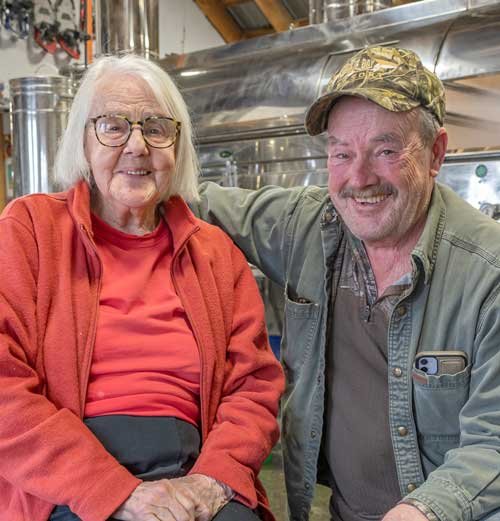
ROOTED IN TRADITION
Welcome to Fradette’s Maple Family
Connecting families to the traditions of maple syrup for a healthier, happier world.
When you visit Fradette's Maple Syrup, you're not just a customer—you're family. Our story began in 1960 when Arsene Fradette first tapped maple trees on our Vermont property, driven by a simple dream of creating something pure that brings people together.
Today, three generations of Fradettes continue this tradition. Mario, who runs the sugarhouse with his wife Mary Jane, learned the art of maple syrup making from his father—understanding the subtle signs of the perfect boil and the precise moment when sap transforms into liquid gold. Their daughter and son-in-law are now learning these same time-honored techniques, to ensure our family legacy continues forward.
Our Maple Promise
Every drop of Fradette's syrup comes exclusively from our own maple trees. We don't blend—we believe in the unique flavor of our specific Vermont forest. When the family personally tastes and grades each batch, they are honoring a family standard value to ensure only the highest quality will reach your table.
Our sugarhouse isn't just a production facility—it's a gathering place. Modeled after traditional Canadian sugar houses, it's where neighbors stop by, stories are shared, and the magic of maple comes to life. During sugaring season, you might find grandchildren helping tap trees, gathering buckets, and visitors quickly becoming lifelong friends..
Join Our Maple Family
We consider everyone who brings our syrup to their table part of our extended family. Whether you visit in person or order online, we want you to taste the passion, tradition, and love that goes into every bottle.
Our maple syrup is more than just a product—it's a connection to Vermont's agricultural heritage, a celebration of family traditions, and an invitation to be part of something special. From our trees to your table, we're sharing a piece of our family's story with every pour.
After all, family traditions are meant to be shared—and we'd love for you to become part of ours. Join the Maple Traditions!
Sweeten your life naturally. Learn more about our Maple Syrups.

“Your maple syrup is the best!!!”
– BO’Dell





